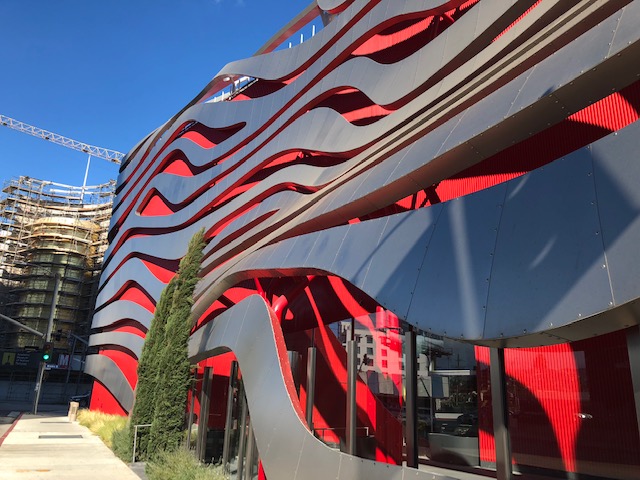
There was a new Ferrari Lusso waiting for me at the Petersen Automotive Museum. Silver and red, like the exterior of the museum, the 4-seat rocket was sleek and menacing.
It was a museum-themed weekend for me in Los Angeles. The Petersen was having its annual gala — and celebrating 70 years of Porsche at the same time.
The gala, with its rooftop tent erected just for this occasion, was a sold-out success. Wolfgang Porsche was presented the 2018 Icon award by Petersen Museum Vice Chairman Bruce Meyer. Jay Leno and Tim Allen entertained the crowd while raising well over $250,000 from the auction.
To exercise the Ferrari, I paid a visit to the Mullin Automotive Museum in Oxnard, 60 miles away. The all-wheel-drive, 560-hp Ferrari gobbled up the Pacific Coast Highway.
I was treated to a private tour of the museum by Rick Eberst, a most knowledgeable and entertaining docent, and I immersed myself in the world of Delahayes, Delages, Voisons and Bugattis. During the last two years, the museum has also acquired 40 Citroëns; the SM on display offered an example of relative modernity.
The Mullin Museum stands as a tribute to Peter Mullin’s dedication to French automobiles and the Art Deco style. In addition to cars there are sculptures, furniture and paintings on display.
Mullin serves on the board of trustees of the Art Center College of Design in Pasadena, and his impeccable taste (along that of his wife Merle) permeates everything he does.
In many ways, the museum is a history of automotive dead ends. These vanished grand marques all represent failures of car manufacturers in terms of either engineering (too complex or not technologically competitive) or marketing (just not good enough at selling their products).
Of all the marques on display, only Citroën is still building cars. And even Citroën, unable to compete in the U.S. market, stopped selling cars here in 1973/74.
By contrast, the Porsche exhibit at the Petersen celebrated one of the great automotive success stories. Since 1938, when the first Porsche, the Porsche 64, was released, Porsche has continued to be one of the most successful (and some say the most profitable) car companies in existence.
Porsche has always been a fierce competitor in racing. From the early Carrera Panamericana races to the current GT3 Cup Challenge, Porsche has maintained a presence in automotive competition at all levels.
At the Petersen, much credit is due to David Sydorick, Bruce Meyer, Chip Connor and Peter Mullin for their intellectual and financial commitments to the museum. They have reimagined the building (a former department store) and brought it into the 21st Century.
Under the guidance of Executive Director Terry Karges, the museum has a developed a fresh, innovative feel. Each primary exhibit is thoughtfully displayed, and the themes of exploration and innovation are a constant.
The Mullin and the Petersen represent two different approaches to automotive history. The Mullin is tightly focused on French cars and reflects Mullin’s personal passion for the cars of the Art Deco era. Primarily privately funded, it exists as an oasis of contemplation.
The Peterson, on the other hand, is in the mainstream of automotive museums. It brings thousands of school children to the exhibit every year. It is constantly involved in community outreach events. Its various design and exploration studios provide multiple points of entry for those interested in learning more about the automobile, past, present and future.
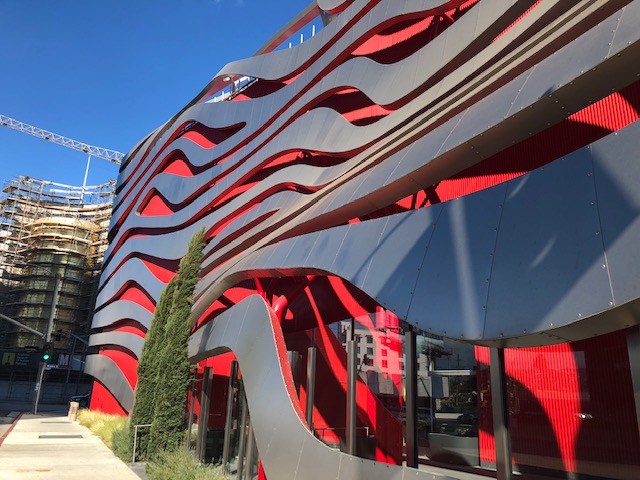
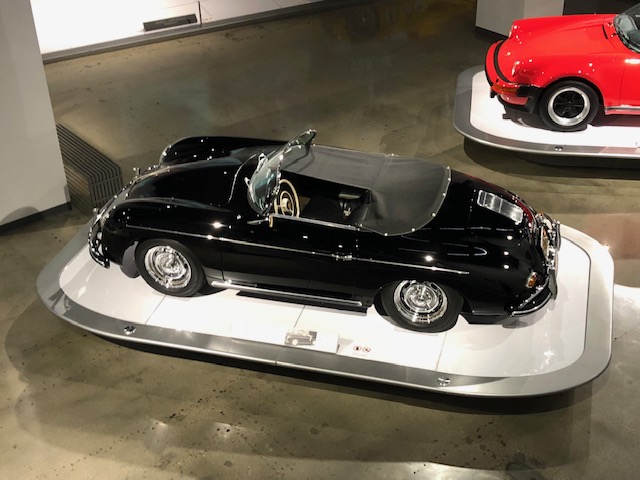
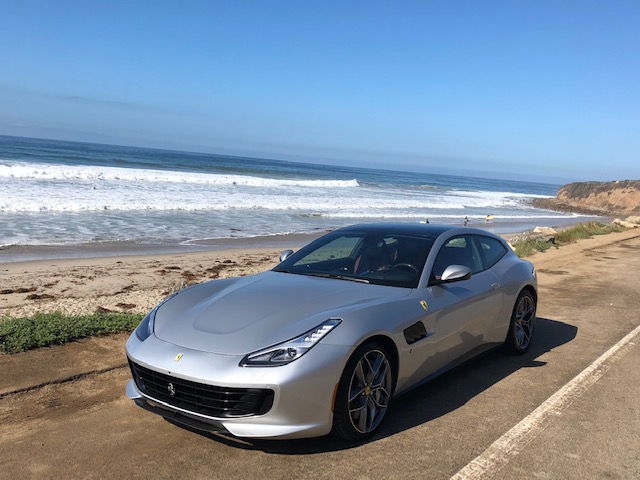
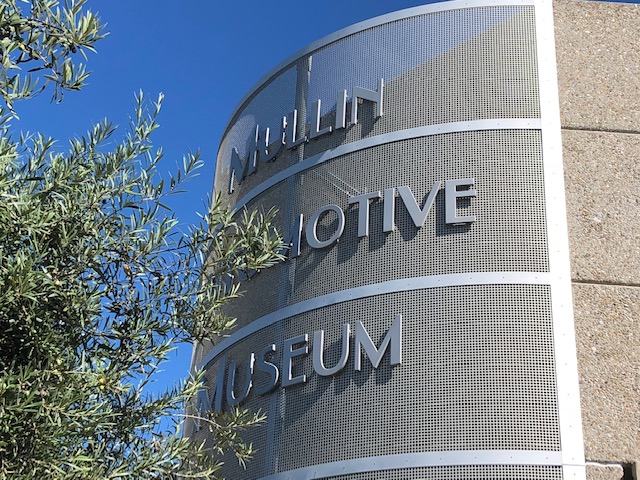
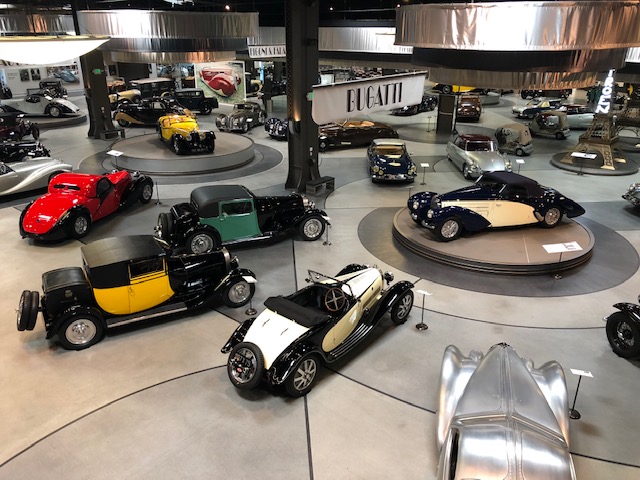
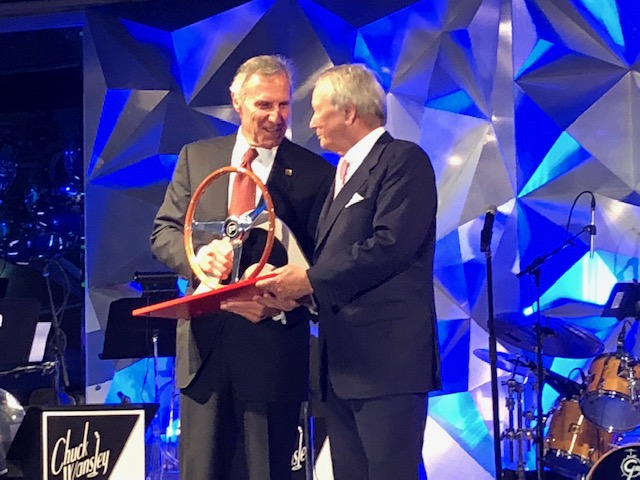
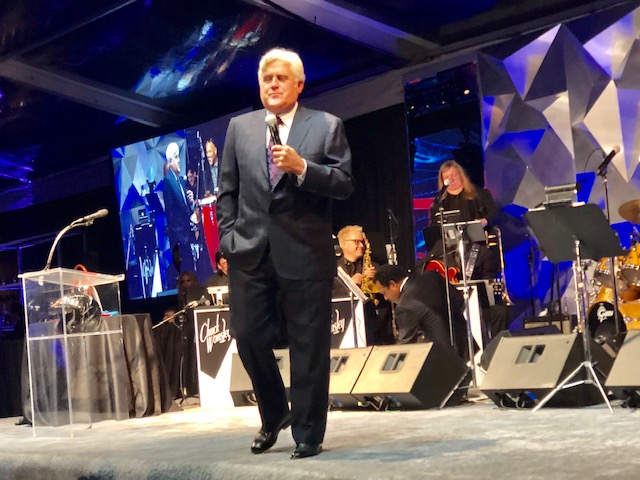

Hi Keith, Citroen last sold cars here in the USA with their ‘73 SM. There were grey market cars but Citroen had nothing to do with them. Greg
Hello Keith,
I’m very surprised that you did not know Citroen last sold a car officially in North America in 1973. Their Factory showroom on Burrard Street in Vancouver, BC became Downtown Toyota. The US bumper laws and collision crash standards officially did them in! I have owned 3 Citroens and am about to buy another…. Mike
What an AWESOME weekend Keith. Those museums will be visited the next time I get out that way. May not be in a Lusso but a 612 or FF would work for me.
Keith, I agree with Greg Long and Mike Welland. Your statement that Citroen was unable to compete in the U.S. market gives a false impression that their cars weren’t good enough to compete. The fact is that the DOT refused to allow Citroen to import the SM models beyond the 1973 model year. At home Citroen was being financially taken over by Peugeot. According to Jeff Daniels book, Citroen SM, production of the SM model was moved outside of Paris to Automobiles Ligier’s small, but efficient operation to keep the SM production alive. After Ligier assembled some some 114 units for export only Peugeot stopped production, ended the relationship with Ligier and ordered the remaining body shells to be sent to the crusher. I think it is most unfortunate that the modern collector car enthusiast along with the professionals in this country have so little knowledge of Citroen and their flagship SM…. Truman
I think it is possible to be a well-informed enthusiast, writer, publisher, and television commentator and obviously diplomatic about the demise of Citroen in the US. The SM had some serious mechanical issues and when coupled with the equipment designed to cope with US emissions standards they tended to become infernos. Like the blog and the contrast between the two museums. Given the choice between researching the history of successful cars and failures, I think it is a normal tendency to focus on the successful cars. The DS, Traction Avant and 2CV are much more important in the history of Citroen than the SM. Given the choice, a Mehari is probably a wiser choice than acquiring a US spec SM and more reliable.